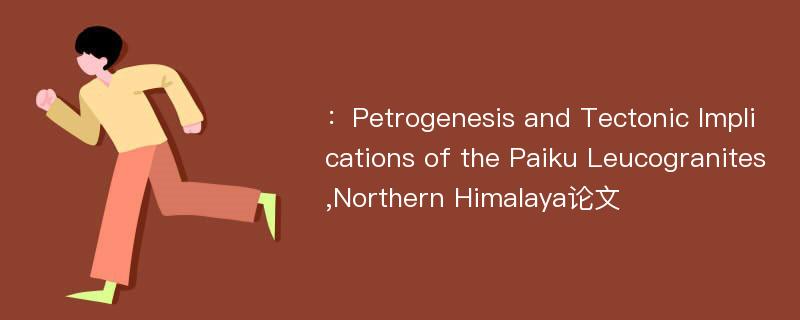
本文主要研究内容
作者(2019)在《Petrogenesis and Tectonic Implications of the Paiku Leucogranites,Northern Himalaya》一文中研究指出:The Himalayan leucogranites provide insights into the partial melting behavior of relatively deeper crustal rocks and tectono-magmatic history of the Himalayan Orogen. The Paiku leucogranites of northern Himalaya can be subdivided into two-mica leucogranite(TML), garnet-bearing leucogranite(GL), cordierite-bearing leucogranite(CL), and tourmaline-bearing leucogranite(TL). All of them are high-K, peraluminous, calc-alkalic to alkali-calcic rocks. They are enriched in light rare earth elements(LREE) and large ion lithophile elements(LILE), and show pronounced negative anomalies of Sr, Ba, K and Ti, but positive anomalies of Nb and Rb. LA-ICP-MS U-Pb zircon dating of one TML, one GL, and two CL samples yielded variable 206Pb/238U ages ranging from 23.6 to 16.1 Ma, indicating the Paiku leucogranites underwent a low degree of partial melting process. Combining with previous studies, we suggest the Paiku leucogranites were derived from partial melting of metasedimentary rocks of the Higher Himalayan Sequence(HHS). The GL and TL mainly resulted from the muscovite-dehydration melting, whereas the TML and CL were mainly derived from the biotite-dehydration melting. Finally, it is concluded that the Paiku leucogranites were probably formed during the subduction of the Indian crust.
Abstract
The Himalayan leucogranites provide insights into the partial melting behavior of relatively deeper crustal rocks and tectono-magmatic history of the Himalayan Orogen. The Paiku leucogranites of northern Himalaya can be subdivided into two-mica leucogranite(TML), garnet-bearing leucogranite(GL), cordierite-bearing leucogranite(CL), and tourmaline-bearing leucogranite(TL). All of them are high-K, peraluminous, calc-alkalic to alkali-calcic rocks. They are enriched in light rare earth elements(LREE) and large ion lithophile elements(LILE), and show pronounced negative anomalies of Sr, Ba, K and Ti, but positive anomalies of Nb and Rb. LA-ICP-MS U-Pb zircon dating of one TML, one GL, and two CL samples yielded variable 206Pb/238U ages ranging from 23.6 to 16.1 Ma, indicating the Paiku leucogranites underwent a low degree of partial melting process. Combining with previous studies, we suggest the Paiku leucogranites were derived from partial melting of metasedimentary rocks of the Higher Himalayan Sequence(HHS). The GL and TL mainly resulted from the muscovite-dehydration melting, whereas the TML and CL were mainly derived from the biotite-dehydration melting. Finally, it is concluded that the Paiku leucogranites were probably formed during the subduction of the Indian crust.
论文参考文献
论文详细介绍
论文作者分别是来自Journal of Earth Science的,发表于刊物Journal of Earth Science2019年03期论文,是一篇关于,Journal of Earth Science2019年03期论文的文章。本文可供学术参考使用,各位学者可以免费参考阅读下载,文章观点不代表本站观点,资料来自Journal of Earth Science2019年03期论文网站,若本站收录的文献无意侵犯了您的著作版权,请联系我们删除。
